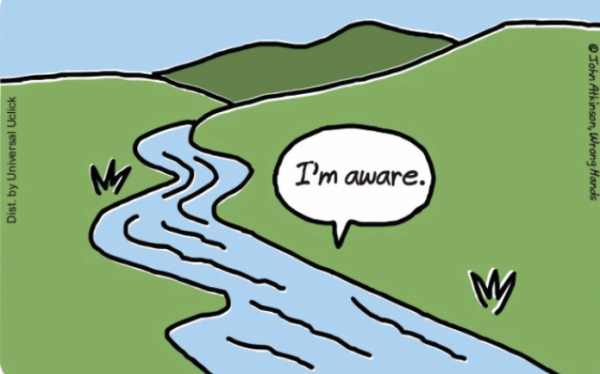Strokes’s 2001 perfect ten album: Is This It
At the beginning of the millennium, Pop and DJ-focused songs dominated the music industry. That was until five teenagers from New York City formed the influential rock band, The Strokes. The band consisted of lead singer Julian Casablancas, drummer Fabrizio Moretti, bassist Nikolai Fraiture, and the two guitarists Albert Hammond, Jr. and Nick Valensi. The band booked a gig at the Mercury Lounge in New York City and impressed the manager there, Ryan Gentles. Gentles booked four more shows for the group, during which, they excited many producers. They settled on Gordon Raphael and, with his help, they recorded three songs and published The Modern Age EP. This collection of tracks gained massive popularity in England and the band proceeded to play a sold-out tour in the United Kingdom without even releasing a full album. After a bidding war between record labels, RCA Records signed The Strokes and the band released their debut album: Is This It.
The Strokes experienced trouble upon releasing their album due to the terrorist attacks on September 11. The record was first released in Europe and a song on the record, called “New York City Cops,” featured lyrics mocking these officers such as, “New York City cops, they ain’t too smart.” After seeing the valiant effort of the police department on this day of tragedy, the band decided to pull the song from the album. The Strokes recorded a new track, “When It Started,” in just two weeks and released this song in the place of “New York City Cops.” The band, however, kept the track on the European CD and the vinyl pressings of the record and made the song a staple in their live shows.
As soon as the album was released worldwide, Is This It received critical and commercial success. Many music reviews gave the album a perfect ten out of ten, while the record entered the UK Billboard charts at number two after an impressive first week of sales. The album rekindled the previously extinguished spark of interest for rock music in this new century. Is This It had an immediate impact on both music and attire. Suddenly kids were interested in playing guitar and dressing like the group’s members. The album inspired many rock bands for years to come including, but not limited to, England’s Arctic Monkeys, Nashville’s Kings of Leon and The Black Keys. Even to this day the album receives overwhelming critical acclaim. Rolling Stone ranked Is This It as the second best album of the 2000s behind Radiohead’s Kid A and also ranked the record as the seventh best debut album of all time.
The album kicks off with the titular track, “Is This It,” one of the record’s more mellow tracks. Valensi’s lead riff over Hammond’s rhythmic chords leads the first verse of the song, while the star of the second verse is Fraiture and his impressive bass line. Casablancas distorts his vocals to sound as if they are coming from a phone, a common theme throughout the album. The album moves to Moretti’s thumping drum beat on “The Modern Age.” Valensi plays octaves on his guitar, which sound similar to those of Lou Reed. Hammond plays non-stop, aggressive chords throughout the song and Valensi adds a guitar solo to give the song the energy the band was looking for. “Soma” is the third song on the record and features Julian Casablancas singing about a drug that has people completely obsessed, even personifying the drug into a girl. Hammond takes the lead guitar here, while Valensi sticks to accompanying chords in the background. As the song progresses, the vocals and the drums become increasingly intense giving the song the perfect powerful tone. The next song, “Barely Legal,” is an impressive combination of the two guitars leading the song. Valensi’s back-and-forth riff perfectly segues one part into another. During the chorus, Hammond plays his typical chords while Valensi’s second riff echoes Casablancas’ vocals. The final song on the first side of the record, “Someday,” was the first single off the album and remains one of the band’s most popular songs. Casablancas shows off his lyrical capability, with lyrics such as, “Alone we stand, together we fall apart,” giving the song an image of a failing relationship. The track has a bouncy beat from Moretti, which is helped by Hammond’s equally energetic chords, Fraiture’s bass line, and Valensi’s guitar work once again accompanying the the vocals of Casablancas. The rest of the band stop and let Fraiture and Moretti continue their poppy beat that truly leads the song. This track perfectly encapsulates the strengths of The Strokes and is justified in the popularity behind the song.
“Alone, Together” starts the second half of the album off with an even more aggressive sound than that of “Soma.” Valensi and Hammond take turns on guitar; Valensi plays a cool riff by himself, but whenever Casablancas starts singing, Albert strums his chords without the help of Nick. Fraiture provides a descending bass line that perfectly complements the two dueling guitars. The song ends with a solo from Valensi that really shows why the song is a highlight off of the album. Valensi begins the next song, “Last Nite,” with a single octave. The rest of the band joins in until the track has reached an equally poppy beat to “Someday.” Hammond’s solo is the real highlight on the song because of the way his guitar work perfectly accompanies Valensi’s octave. “Hard to Explain,” the final single from the album, is one of the best songs The Strokes have released. The dueling guitars are as good as ever, Casablancas’s fast vocals shine throughout the chorus and, in the bridge, the bass stands out. Guitar feedback begins the fastest song on the album, “New York City Cops.” Casablancas uses lyrics that embody troublesome young adults and the aggressive riff reiterates this theme. In the bridge the two guitars perfectly mix and Valensi provides another killer solo. The penultimate track, “Trying Your Luck,” continues the lyrical theme of failing relationships, using lyrics like “At least I’m on my own again instead of anywhere with you.” The two guitars play complementing chords during the verse until the bass explodes during the chorus. Hammond gets to play another solo, which, once again, perfectly flows over Valensi’s chords. The final song, “Take It or Leave It,” has the album finish with more aggressive chords, another riff accompanying the vocals and Moretti’s cymbals that crash nonstop. Hammond provides his best solo of the album, one that matches the intensity of the track and leaves the listener wanting more and wondering “Is This It?”


